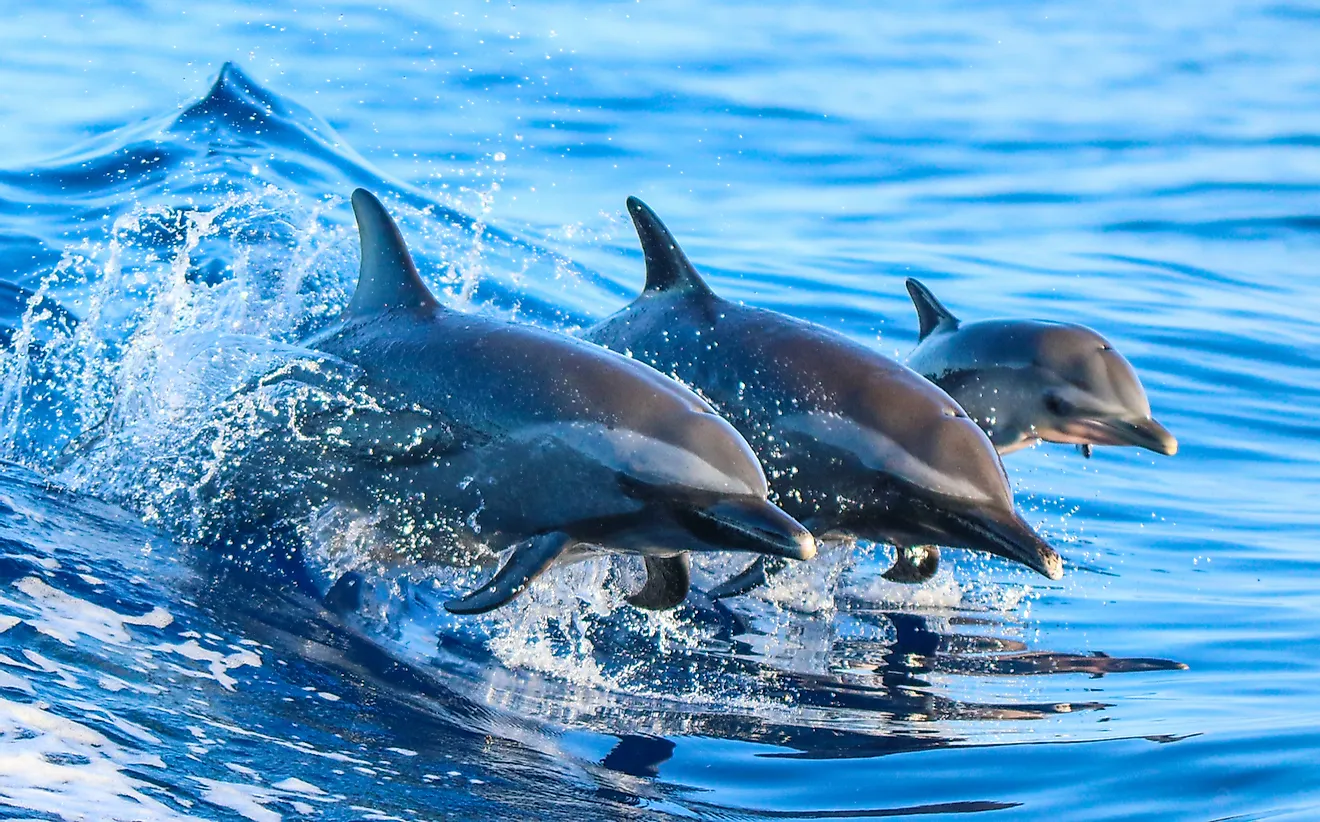Dolphins are the most popular marine animals in the world, well-regarded for their intelligence and social nature. But there must be more to it than this in this animal. In this post, we bring you these 7 dolphin facts based on scientific research some you may already know but we hope that at least a few surprises lie in store. So, let’s go and dig out the facts about dolphins.
Table of Contents
ToggleFacts about dolphins
1. Type of dolphins
Dolphins are mammals belonging to the definitive family which includes more than 30 different species. It’s estimated that there are more than 2,000 dolphins in captivity who live in water parks, dolphinariums, and even in commercial enclosures. It’s not possible to provide the exact data regarding dolphin populations but it is estimated to be around 9 million individuals. Dolphins are gregarious animals with the tendency to grip their own social order. They can create groups of up to $1,000 all communicating and relating to each other.
2. Where do dolphins live?
The habitats of dolphins and their migration patterns depend on several factors such as food availability, temperature, or distance from shore. They tend to opt for shallow waters near the coast to avoid cooler regions. For this reason, we can find dolphins almost anywhere in the world.

3. Dolphin communication
The forms of communication dolphins used to interact with each other and their environment is of great interest to the scientific community. Dolphins use a highly developed method of communication known as echolocation. This ability makes them incredibly sensitive to changes in their environment but they also emit high and low-frequency vocal specializations to communicate with each other and even with other marine animals. The wide spectrum of pitches and noises dolphins can emit vary according to their location and their complexity demonstrates the breadth of their cognitive abilities. Some of the functions of these noises are to recognize specific individuals to maintain cohesion within the group and to coordinate movements for hunting and surveillance.
4. Do dolphins use tools?
A study conducted on a group of bottlenose dolphins revealed that some individuals, mostly females, use sponges as tools during foraging. After observing them for days it was concluded that they were being used and searched for food. Although this hypothesis is generally supported, it’s also believed dolphins can use sponges for both plays and to take advantage of their possible medicinal benefits. Whatever the exact reason, the transport of sponges is a common specialized behavior in dolphins.
5. Is it true that dolphins sleep with one eye open?
Dolphins do not dream in the same way as other mammals. In fact, a study published in 1964 explained the bottlenose dolphin slept with one eye open and one closed. They suggested it could be due to a state of alert against possible predators, however, it could not be demonstrated. This type of behavior had a real surveillance function. Later another study of white pacific dolphins in captivity showed this group is particularly known for opening or closing their eyes depending on the position in the pool of members of the group. It is believed they open and close their eyes during sleeping artists to ensure they maintain their link with other members of the /same social group.
6. What do dolphins eat?
In the first stages of life, dolphins feed only on breast milk. After this time, they will start to hunt by themselves and feed on other resources. Dolphins are carnivores and their diet is based mainly on the consumption of fish, octopus, mollusks, and other invertebrates. Dolphins can devour surprisingly large prey even those that can exceed 4 to 6 kilograms, as they gobble instead of to. This form of feeding means they can avoid damage from the fins or spines of their prey.

7. Dolphin intelligence
Dolphins are rational animals in that they can understand and represent the environment in which they live. They make logical thoughts and conclude them. They can also modify their behaviors to intentionally create new models of interaction and they look for new perspectives or objectives. These are intelligent animals at the behavioral, cognitive and social levels. They are self-aware and capable of carrying out different procedures or enacting methods. They have a social conscience and also share a complex mastery of language and natural forms of interspecies communication.
8. Do dolphins attack human beings?
Cases of dolphin attacks on human beings are extremely rare. In most cases, dolphins are confusing people with prey so they end up losing them. That can also happen if humans bother or try to interact. On the other hand, cases of dolphin attacks on people in captivity are more common.
Well, these are some interesting facts about dolphins. For more global facts, visit our website.

